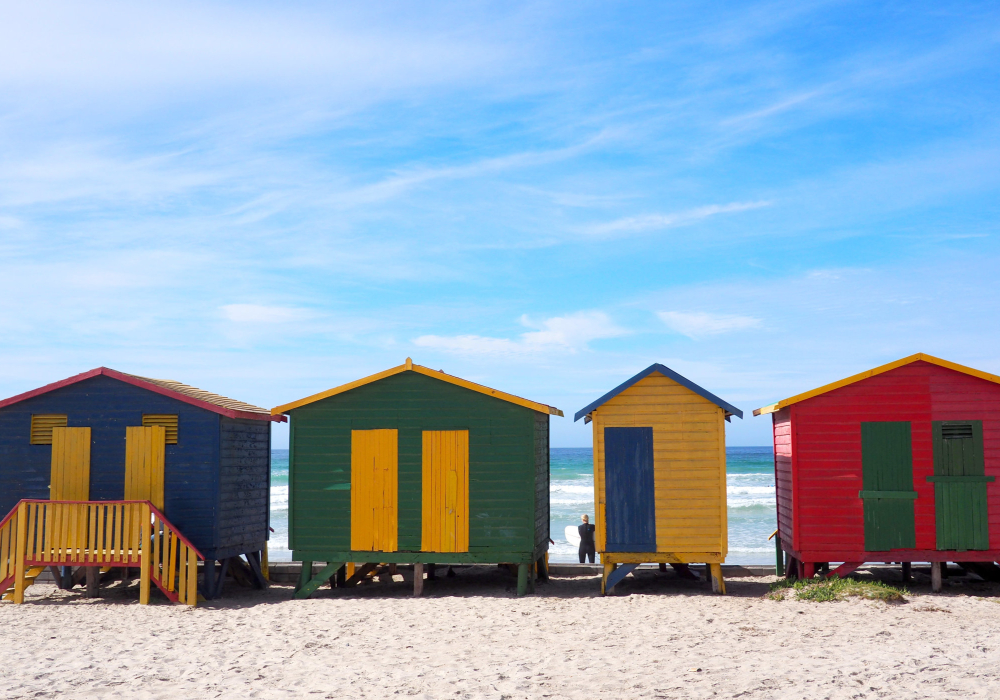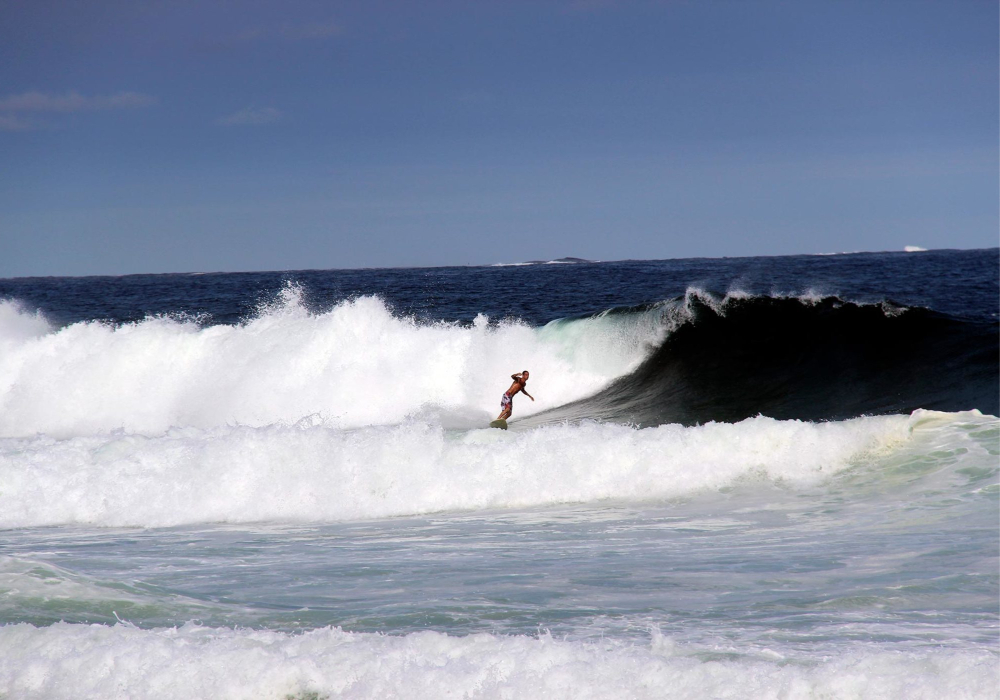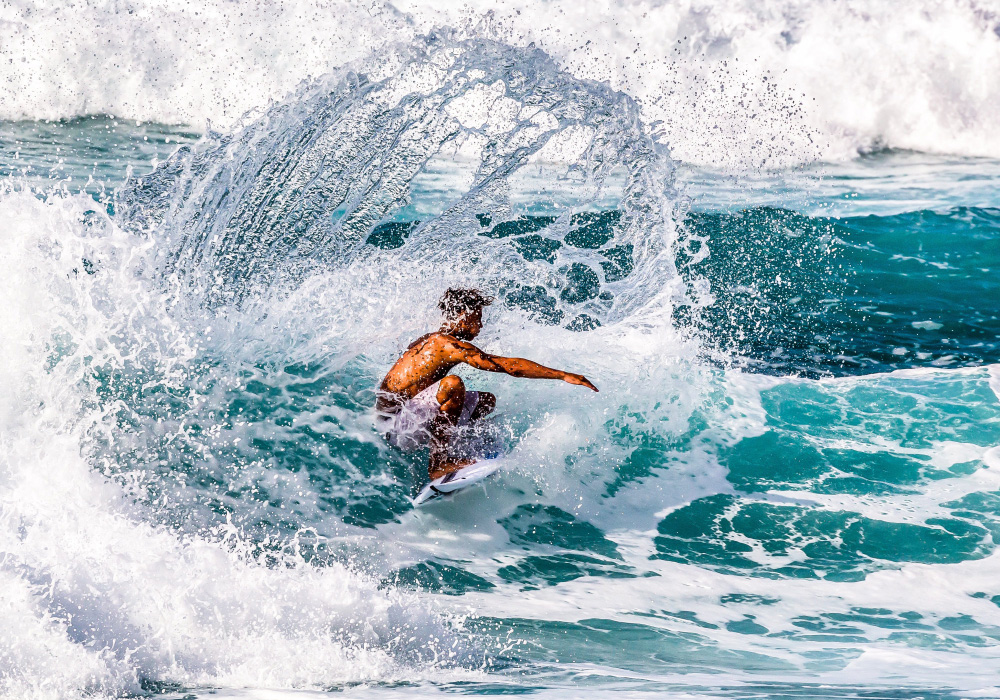Surfing enthusiasts seek the world's best waves at iconic spots like Pipeline in Hawaii and Jeffreys Bay in South Africa. These locations offer thrilling rides for surfers of all skill levels.
Surfing is more than just a sport—it’s a lifestyle, a passion, and an adventure that connects people across the globe. The thrill of catching the perfect wave draws surfers to the most iconic spots, where stunning scenery, powerful waves, and vibrant local cultures create an unforgettable experience. Whether you are a beginner looking for gentle swells or an experienced surfer seeking a challenge, choosing the right destination is essential.
From the legendary Pipeline in Hawaii to the long, fast rides of Jeffreys Bay in South Africa, every spot offers unique waves and conditions that shape the surfing experience. Understanding these locations, respecting surf etiquette, and preparing correctly is key to making the most of every session on the water.
Beyond the technical aspects, surfing embodies a deep connection with nature and fellow surfers. The best surf destinations offer great waves and a sense of community and culture. Locations like Bali, Australia’s Gold Coast, and Mundaka in Spain have established themselves as must-visit surf hubs where riders from around the world come together to share their love for the ocean.
Whether you're searching for powerful reef breaks, endless point breaks, or mellow beach waves, the adventure of discovering the world’s best surf spots is as rewarding as the ride itself.
Discovering the best surfing destinations
Surfing is an adventure that takes you to some of the world’s most breathtaking coastal locations. These legendary spots are known for their wave quality, stunning surroundings, and welcoming surf culture. Here are some of the top surfing destinations to add to your bucket list:
 Muizenberg Beach, Cape Town, South Africa
Muizenberg Beach, Cape Town, South Africa
Top surfing spots
| Location | Best Season | Wave Type | Water Temperature |
|---|---|---|---|
| Hawaii, USA | November - February | Reef Break | Warm |
| Gold Coast, Australia | March - May | Beach Break | Warm |
| Bali, Indonesia | April - October | Reef Break | Warm |
| Jeffreys Bay, South Africa | June - August | Point Break | Cool |
| Mundaka, Spain | September - April | River Mouth | Cool |
Factors to consider when choosing a surfing spot
Choosing the right surfing spot involves more than just picking a famous beach. Consider these factors to ensure a great surfing experience:
- Wave quality: Look for consistent and clean waves. Quality waves make for better rides and more fun.
- Skill level: Some spots are better suited for beginners, while others are for advanced surfers. Match the spot to your skill level.
- Weather conditions: Check the local weather patterns. Wind direction and strength can greatly affect the waves.
- Local crowd: Popular spots can get crowded. If you prefer solitude, look for lesser-known beaches.
- Safety: Consider the presence of lifeguards and the type of ocean floor. Some spots can be dangerous with rocks or coral.
Before you head out, do some research. Learn about the local culture and surf etiquette. Respecting the locals and the environment ensures everyone has a good time.
 Surfer at Barra da Tijuca Beach, Rio de Janeiro, Brazil. Photo credit: Meres J. Weche
Surfer at Barra da Tijuca Beach, Rio de Janeiro, Brazil. Photo credit: Meres J. Weche
Surfing etiquette: Respect the waves and fellow surfers
To maintain harmony in the water, every surfer should follow key etiquette rules:
- Right of way: The surfer closest to the peak of the wave has the right of way. Always look before you drop in.
- Don't snake: Snaking means paddling around someone to steal their wave. It's considered very rude.
- Communicate: A simple shout can prevent collisions. Let others know your intentions.
- Respect the lineup: Wait your turn. Don’t paddle straight to the front of the lineup.
- Help others: If someone is in trouble, offer assistance. Surfing is a community, and we look out for each other.
Surfing is built on respect—respect for the ocean, the locals, and fellow wave riders. Following these guidelines fosters a positive surf culture and ensures an enjoyable session for all.
Essential gear for surfing
Having the right equipment can make or break your surfing experience. Here’s a checklist of must-have gear:
- Surfboard: Choose a board that suits your skill level. Beginners often start with longboards.
- Wetsuit: Depending on the water temperature, a wetsuit keeps you warm and protects your skin.
- Leash: This strap attaches your surfboard to your ankle, preventing it from drifting away.
- Wax: Apply wax to your surfboard for better grip.
- Fins: Fins help you steer and maintain stability on the waves.
- Earplugs: Protect your ears from water and cold wind.
Here's a quick reference table for essential surfing gear:
| Item | Purpose |
|---|---|
| Surfboard | Riding waves |
| Wetsuit | Insulation and skin protection |
| Leash | Keep surfboard attached |
| Wax | Improve grip |
| Fins | Steering and stability |
| Surf Earplugs | Ear protection |
Tips for staying safe in the water
Safety is paramount in surfing. Here are some tips to keep you safe:
- Know your limits: Surf only in conditions that match your skill level.
- Check the weather: Always check the weather and wave conditions before heading out.
- Warm-up: Warm up your muscles before entering the water to prevent injuries.
- Use the buddy system: Surf with a friend and keep an eye on each other.
- Respect the ocean: Understand and respect the power of the sea. Avoid dangerous areas.
- Stay hydrated: Drink plenty of water to stay hydrated.
- Learn to read the waves: Recognize rip currents and avoid them.
- Wear sunscreen: Protect your skin from harmful UV rays.
Follow these safety tips to ensure a thrilling yet safe surfing adventure. Remember, preparation is key to enjoying the surf and staying safe in the water.
Riding the waves: Mastering the art of surfing
Surfing Spots: Ride the World’s Best Waves is a thrilling adventure. Mastering the art of surfing transforms this adventure into a lifelong passion. Riding the waves requires dedication, practice, and an understanding of the ocean. Every surfer's journey is unique and exhilarating, from learning basic techniques to mastering advanced maneuvers.
Learning the basic techniques of surfing
Every surfer's journey starts with the basics. Learning the basic techniques of surfing is essential for safety and enjoyment. Here are the key steps:
- Paddling: Use your arms to paddle out to the waves. Keep your body centred on the board.
- Pop-Up: This is the move to stand up on your board. Push up with your hands, then quickly bring your feet under you.
- Stance: Keep your feet shoulder-width apart. Bend your knees slightly for balance.
- Riding the Wave: Shift your weight to steer the board. Lean forward to speed up, lean back to slow down.
Practicing these techniques repeatedly helps build muscle memory. Consistency is key. Try to surf regularly, even if for a short time. This helps improve your skills faster.
Here's a quick look at the basic surfing techniques in a table format:
| Technique | Description |
|---|---|
| Paddling | Use arms to move through water |
| Pop-Up | Quickly stand up on the board |
| Stance | Feet shoulder-width apart, knees bent |
| Riding the Wave | Shift weight to steer the board |
Advanced surfing maneuvers for experienced surfers
For those who have mastered the basics, it's time to learn advanced surfing maneuvers. These moves require skill, balance, and precision.
Here are some key advanced maneuvers:
- Cutback: This move changes the direction of your surfboard. Turn sharply back toward the breaking part of the wave.
- Bottom turn: This is the first turn at the bottom of the wave. It sets up your next move.
- Top turn: A sharp turn at the top of the wave. It helps generate speed.
- Snap: A quick, powerful turn off the top of the wave.
- Tube ride: Riding inside the hollow part of the wave. This is a thrilling maneuver.
Practicing these maneuvers requires patience and perseverance. The ocean's waves are unpredictable, and each wave presents a new challenge and opportunity.
Advanced surfers often seek out specific surf spots known for their challenging waves. Some of these spots include:
- Pipeline, Hawaii
- Teahupo'o, Tahiti
- Mavericks, California
- Jaws, Hawaii
- Uluwatu, Bali
These locations offer some of the most exhilarating waves in the world. Surfers can test their skills and push their limits. Mastering advanced surfing maneuvers is a continuous journey filled with excitement and challenges.
The history and evolution of surfing
Surfing has ancient roots, dating back to Polynesian culture. Early surfers rode wooden boards on the waves of Hawaii. Surfing was not just a sport but a spiritual practice and a way of life. As it spread to other parts of the world, surfing evolved.
By the 20th century, surfing became popular in California and Australia. Innovations in board design made the sport more accessible and exciting. Pioneers like Duke Kahanamoku, a Hawaiian swimmer, played a crucial role in promoting surfing globally.
Here's a brief timeline of surfing's evolution:
| Year | Event |
|---|---|
| Ancient Times | Polynesians start surfing |
| 1907 | Duke Kahanamoku introduces surfing to the mainland USA |
| 1950s | Surf culture booms in California |
| 1960s | Shortboards revolutionize surfing |
| 1990s | Professional surfing gains popularity |
Today, surfing is a global phenomenon with millions of enthusiasts. Modern surfers use advanced techniques and equipment to push the boundaries of the sport.
The global surfing community and its contributions
The surfing community is tight-knit and supportive. Surfers from all over the world share tips, stories, and a mutual respect for the ocean. This community has made significant contributions to environmental conservation and ocean health.
Many surfers advocate for clean beaches and waterways. They organize beach cleanups and campaigns and raise awareness about marine pollution. Surfers are often the first to notice changes in ocean conditions, making them valuable allies in environmental protection.
Some key contributions of the global surfing community include:
- Promoting sustainable tourism
- Supporting ocean conservation organizations
- Innovating eco-friendly surf gear
Surfing competitions and events also play a vital role in bringing people together. Events like the World Surf League foster camaraderie and showcase the talent of surfers from different countries.
The global surfing community continues to grow and inspire new generations. Their passion for the sport and the ocean drives positive change and fosters a sense of unity and respect for nature.
Surfing is an exhilarating sport that offers the thrill of riding waves and the opportunity to explore some of the world’s most beautiful coastal locations. Whether paddling out at the legendary Pipeline, carving through Jeffreys Bay’s perfect walls, or catching the endless waves of Bali, every surf trip brings a new adventure.
Understanding the nuances of different surf spots, respecting surf etiquette, and ensuring proper preparation is crucial for maximizing your time in the water. By selecting the right gear and considering factors such as wave quality, skill level, and safety, you can ensure a smooth and enjoyable ride every time.
Beyond the technical aspects, surfing is about connection—to the ocean, fellow surfers, and the culture surrounding the sport. The global surf community is built on respect, camaraderie, and a shared passion for the waves. Whether you’re a beginner learning to pop up or an advanced surfer mastering cutbacks, each session is a chance to improve, push your limits, and appreciate the ocean’s power. So grab your board, embrace the journey, and enjoy the ride—because the best waves are always the ones yet to come. Happy surfing!



Comments powered by CComment